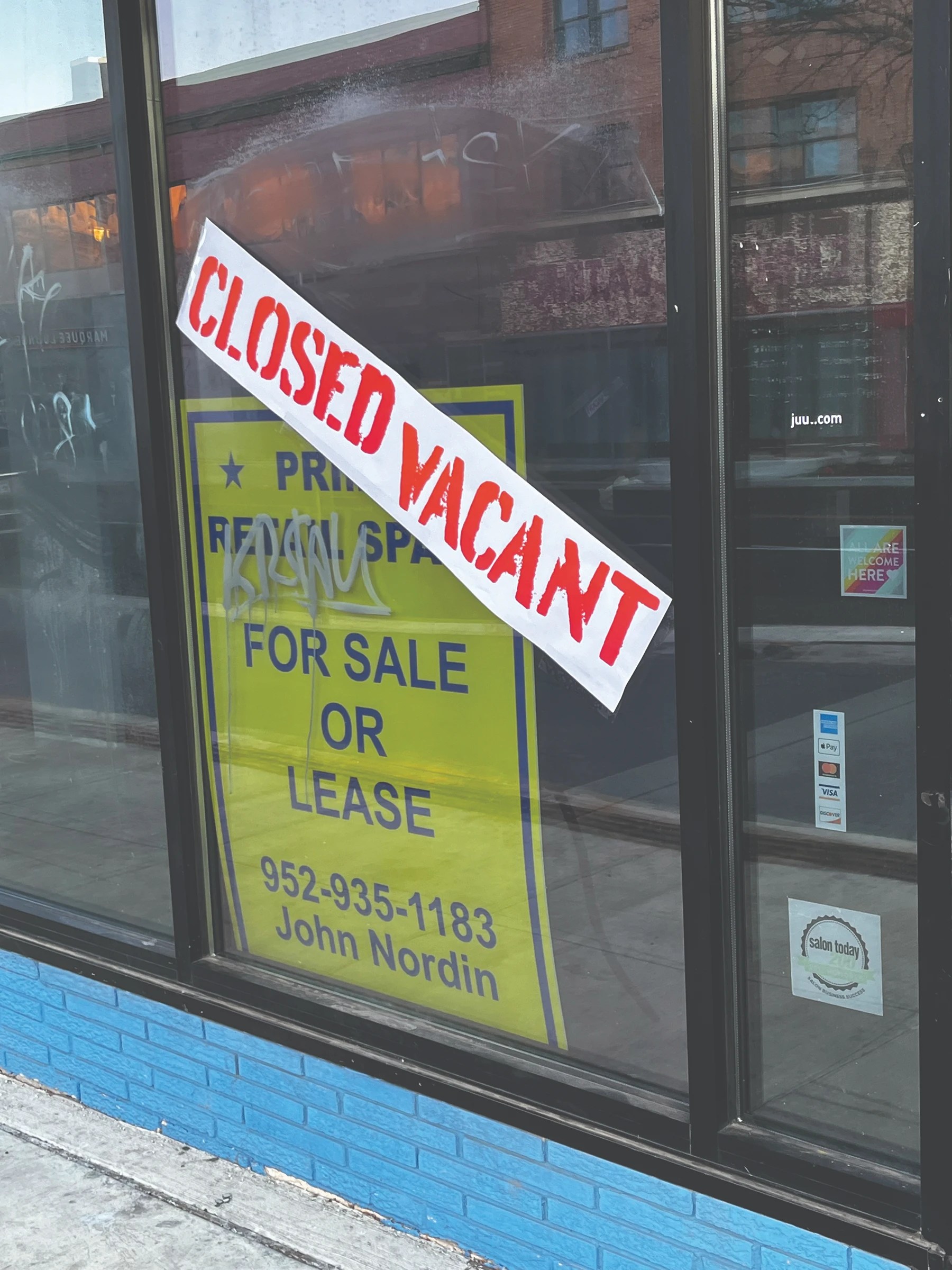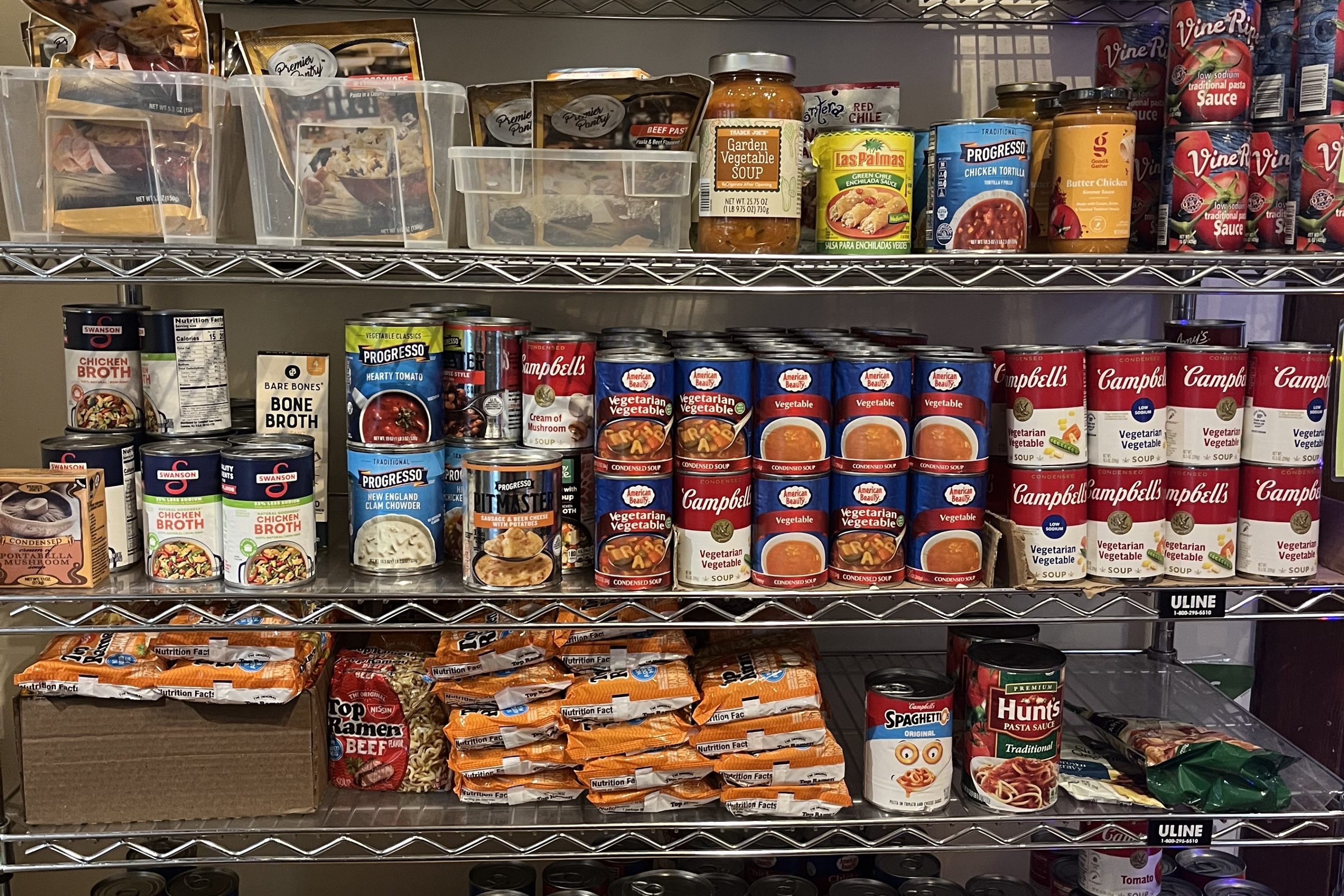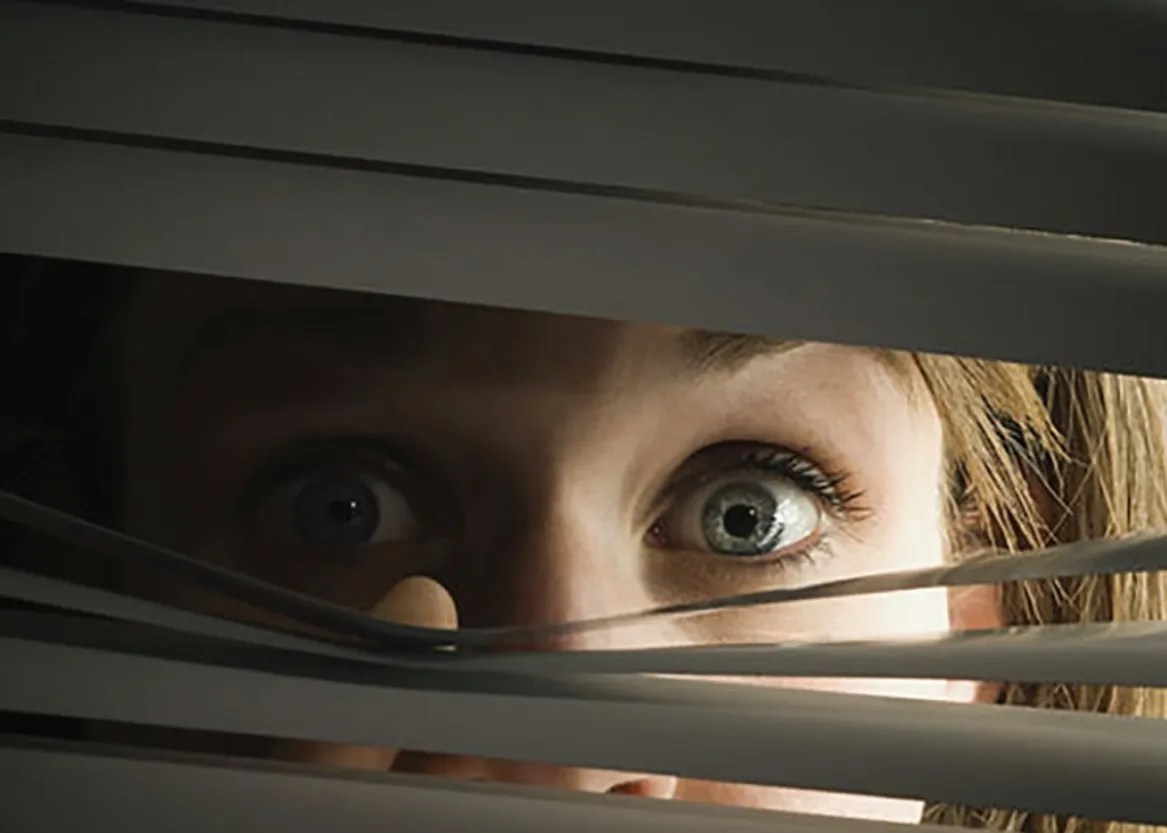Highlighting obstacles for Uptown’s revitalization.
Small Business Saturday was on November 30, 2024. It included a frigid tour of the Uptown area for Mayor Frey.
The event was organized by Andrea Corbin, owner of Flower Bar on Lyndale Avenue and founder of the Minneapolis Business Alliance, a nonprofit dedicated to revitalizing the city and educating voters on issues affecting residents.
The tour aimed to provide the mayor with an on-the-ground perspective of the hurdles residents and businesses are facing as they work to halt Uptown's ongoing decline. Currently, 26 buildings sit vacant in the two-block radius around Lake
Street and Hennepin Avenue — an intersection that, 15 years ago, was said to be the busiest in the state. Even if that was an exaggeration in 2009, it is certainly far from true today.
The tour highlighted that Uptown needs help from city government because residents and small businesses are still trying to rebound from the pandemic, George Floyd uprising and subsequent property destruction, shootings, homeless encampments, arson and years of construction.
At the event, Mayor Frey entered a semi-hostile environment to listen to concerns — a gesture many attendees felt was more than what Up town representatives Ward 7 Council Member Katie Cashman and Ward 10 Council Member Aisha Chughtai have been willing to do.
Uptown needs the same attention paid to downtown.
During the tour, attendees reminisced about how vibrant and fun Uptown used to be.
They expressed a strong desire to bring that energy back and suggested they may withhold support from mayoral and city council candidates who do not prioritize Uptown's revitalization.
In October, the latest version of a Downtown Action Plan was released, and attendees expressed hope that it succeeds.
It was mentioned that the City Council has allocated $750,000 for Public Works to support Ware house District Live — an enhanced pedestrian zone featuring food trucks, tables and seating, restrooms and various activities.
Additionally, $400,000 was approved for the "Chameleon" shop program, which has the loosely defined goal of "growing the downtown retail ecosystem by connecting the community, identifying current opportunities and supporting innovation and vibrancy in various ways."
Another $250,000 has been earmarked for the Arts and Cultural Affairs department to subsidize rental costs for artists occupying vacant storefronts.
The intention behind these initiatives is intended to transform downtown into a space where people want to work, live and play — 24/7, 365 days a year.
The hope is that by combining tax incentives to attract developers, grants to support small businesses and a stronger focus on safety and cleanliness, people will come back.
Attendees advocated that while resources and attention are being directed toward downtown, Uptown is in desperate need of its own dedicated action plan. For meaningful revitalization to occur, Uptown requires the same level of attention being given to downtown.
They argued that an Uptown-focused action plan must prioritize restoring parking to make businesses more accessible, improve safety and provide amenities like clean restrooms. It also requires city leaders who actively engage with residents and business owners, and it depends on ensuring people feel safe walking to their cars at 1 a.m. after a night out.
Ironically, the city was to charge the Uptown Art Fair $215,000 for city services, such as security, one of the factors that has led the historic event to depart Uptown for a private south Minneapolis parking lot where they will rebrand as the SoMi (South ‘Minneapolis) Art Fair in 2025. The festival also cited an unworkable streetscape due to a new median and narrower street that make the space unworkable for the festival.
Recognizing blight: 26 vacancies in a two-block area.
The group warned that 26 vacancies in a two-block area is a clear sign of blight, and that Uptown is on the brink of collapse.
The fear is that if action isn’t taken, the neighborhood risks being overtaken by head shops and national chain fast-food outlets — not the diverse, small scale and locally owned businesses and restaurants that are desired by local residents.
The belief is that the people who once visited Uptown to shop or dine will find new destinations with ample parking and perceived safety — like suburban locations — and they won’t be coming back.
If this scenario sounds overly bleak, the group encourages people to walk the streets around Uptown.
The reality is hard to ignore: vacancy after vacancy, deserted sidewalks, empty bike lanes, vacant buses, lonely transit stations and trash and graffiti littering doorways.
Attendees found it heartening to see the mayor take the risk of criticism by showing up to witness this firsthand. But the warning signs are everywhere: It’s literally the graffiti on the wall.






